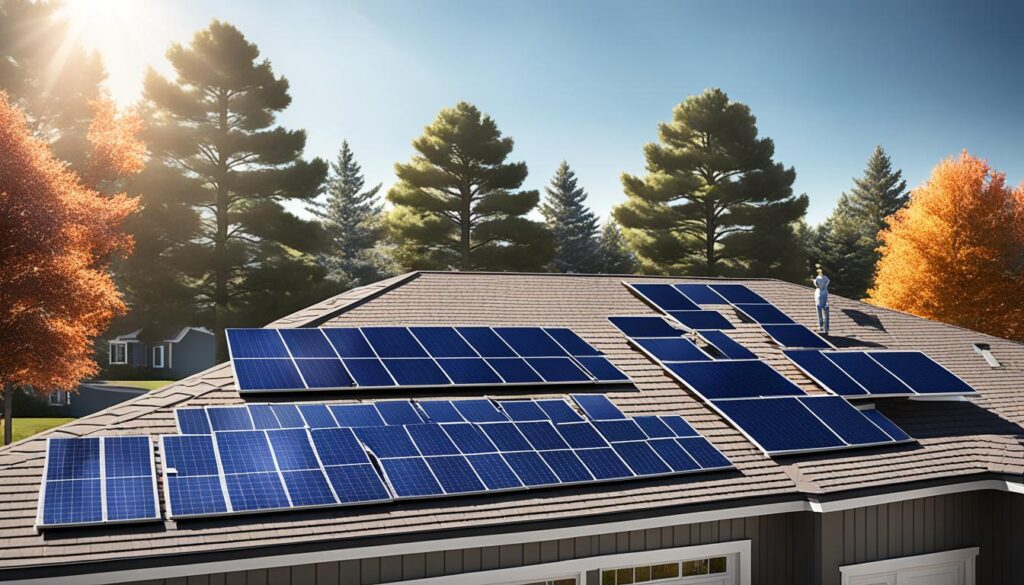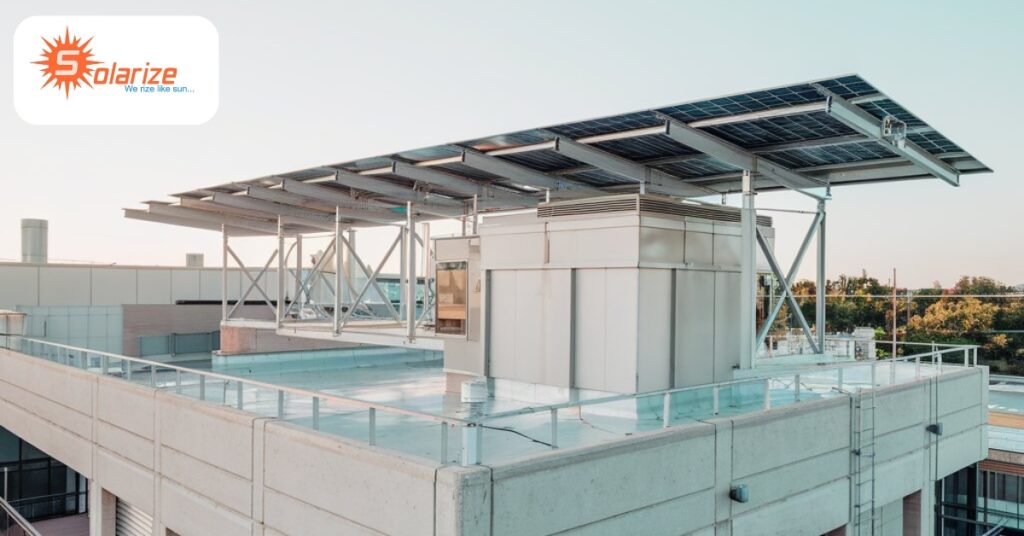Switching to solar energy is no longer that far-out dream but rather quickly becoming a realistic choice for both homes and businesses. However, before you enter this world of renewable energy, there’s one important thing you need to consider: the Rooftop solar system price. Knowing how much it’ll hit your wallet and how much it’ll cost is key in making this long-term investment.
In this blog post, we will take you through everything you should know about rooftop solar system pricing that highlight those key cost-influencing factors. Let’s get to it with some real-world case studies, maximize your return on investment (ROI), and we will break it all down for you in the PAS (Problem, Agitate, Solve) model, giving you crystal-clear insights into the pricing landscape, helping you decide if solar is the right move for you.
Problem: Expensive Electricity
The biggest problem most homeowners face today is the expensive electricity. Every year, utility rates are rising higher and higher, which is quite a burden for most budgets. What is worse is that these prices may still have potential to rise since demand for energy is increasing, and resources become scarce.
So, lots of households in Indian cities spend a considerable amount of money each month on grid electricity. For businesses, the cost is steeper still with energy costs multiplying manifold. It’s then that discussions about the solar rooftop system price start to appeal to most, but many still aren’t making the jump primarily due to perceived costs.
Agitate: Hidden Costs of Staying Grid-Tied
Maybe you think the investment for a solar system is too much money upfront? Well, let’s get a closer look at those hidden costs of sticking with grid power. Here’s the thing: electricity from the grid can appear to be cheaper each month, but expenses can quickly add up over the long run.
Just imagine: You are spending ₹5,000 a month on electricity. That adds up to ₹60,000 a year. Over 10 years, with annual price increases, you will exceed ₹7-8 lakhs in expenditure. And do not forget: such scenarios fail to account for power cuts, inflation that increases the price of electricity, or increased maintenance costs on electrical infrastructure.
On the other hand, solar offers an opportunity to significantly cut down these costs. However, there is a need to understand what it costs to have a rooftop solar system and how that plays into long-term savings.
Solve: Breaking Down the Rooftop Solar System Price
To begin with, there are plenty of factors that go into determining the price when investing in a rooftop solar system. Let’s take each apart and give you a better idea of what you’re paying for:
1. System Size
The size of the solar system that you would need will have the highest influence on the cost. Bigger systems require more panels, which naturally raises the price. A 5 kW system would cost between ₹2.5 lakhs and ₹3.5 lakhs in India. In sharp contrast, a 10 kW system could easily run into anywhere between ₹5.5 lakhs to above ₹6 lakhs. Indeed, the size would be determined by how much you consume; thus, it’s extremely important to analyze your energy bills and consumption trends before you make the final decision.
Case Study Example: In Pune, a mid-sized household had installed a 5 kW rooftop solar system in 2021. The same would consume around 600 units of electricity in a month, and it would have cost them ₹4,800 per month. After installation of the solar system, their electricity bill came down to almost zero, adding over ₹55,000 to their savings each year. Now, the installation comes for ₹3 lakhs, meaning they will recover the same in about 5.5 years and then will enjoy 20+ years of virtually free electricity.
2. Type of Solar Panels
All solar panels are not the same. Present in the market are three types of panels, which differs from its efficiency as well as in their price range:
Monocrystalline Solar Panels: These are the most efficient type but at a cost that is quite hefty, that ranges between ₹50,000 and ₹80,000 per kW
Polycrystalline Solar Panels: These are less efficient compared to monocrystalline solar panels, but cheaper, that ranges between ₹40,000 and ₹60,000 per kW.
Thin-Film Solar Panels: Least efficient but light in weight and flexible, used for commercial applications. These cost between ₹35,000 and ₹45,000 per kW
3. Installation Charges
Installation is another cost determinant of the rooftop solar system. A well-installed system delivers the maximum level of energy efficiency and extends its life cycle. The installation charges range between ₹20,000 to ₹50,000, depending on the layout complexity of the setup, conditions of the rooftop, and requirement of wiring.
Case Study Example: A commercial building in Mumbai got a 10 kW system with premium monocrystalline panels. It included finer rooftop adjustments and additional wiring, which are valued at about ₹75,000 more than the standard installation. However, the building saves ₹10 lakhs in electricity each year. It means the initial cost will happily cop up with return on investment.
4. Inverters and Batteries
The inverter is the device that converts the DC electricity your panels have produced into usable AC electricity. Inverters usually range from ₹20,000 to ₹1 lakh depending upon their capacity and efficiency. However, if you prefer adding battery storage (for power backup at night or when it is off), this could add another ₹1 lakh to ₹2.5 lakhs to the total price tag.
5. Government Subsidies and Incentives
One of the main methods of cost-cutting in the case of a rooftop solar system would be to use government subsidies. The Indian Government, under its National Solar Mission, gives subsidies of up to 40% of the costs of installing rooftop solar devices. That might save you a pretty penny upfront and all the more reason to turn to solar.
For example, a 3 kW system priced at ₹1.8 lakhs can attract a subsidy of ₹72,000, and take the final price all the way down to ₹1.08 lakhs.

6. Maintenance Cost
Maintenance of a solar system is low and not zero. Panels will require cleaning, and one is required to inspect the inverter and wiring at least once or twice a year. On average, one can expect to spend ₹5,000 to ₹10,000 per year on maintenance.
With maintenance costs, the saving on the electricity bills it provides for through solar power far outweighs that over time.
Factors Influencing the Cost of Rooftop Solar Systems
System Size: The size of the solar system you want will have the greatest effect on the cost. Larger systems need more panels, making them costlier. For example, 3kW may be approximately ₹2,00,000 whereas a 5kW system could be around ₹3,35,0001.
Type of System: There are two types of solar systems. They are on-grid or off-grid. In an on-grid system, it is connected to the electricity grid and can feed excess power back into the grid. In off-grid systems, it relies solely on a battery for energy storage and cannot be inter-connected with the electricity grid. On-grid systems are cheaper as batteries are not used.
Quality of Components: This refers to the quality of solar panels, inverters, and other components. Generally, the cost will vary with these components. High quality ones will have a higher upfront cost but might show better efficiencies and longer life periods.
Installation costs: Another aspect which can affect the cost of installation can also be the installation process. For example, factors like the type of roofing, the height of the building, and the access route will determine the installation costs.
Government Incentives: The Indian government has a plethora of subsidies as well as incentives to promote solar energy. This will significantly bring down the cost for a rooftop solar system. For instance, the MNRE offers the maximum subsidy up to 40% in case of residential solar.
Case Study: Successful Adoption of Rooftop Solar Systems
To illustrate the benefits of rooftop solar systems, let’s look at a case study. In recent years, India has seen a surge in the adoption of rooftop solar systems, particularly in urban areas. One notable example is the installation of solar panels in residential complexes in Pune. These systems have not only reduced electricity bills but also provided a reliable power supply during frequent power cuts.
Residents of these complexes have reported significant savings on their electricity bills, with some households saving up to ₹50,000 annually. The success of these projects has encouraged more homeowners to invest in solar energy, contributing to a greener and more sustainable future.
What are the maintenance costs for rooftop solar systems?
The cost to maintain a rooftop solar system is relatively low and consists of very simple activities. While doing this, it should ensure that your system works efficiently and lasts its expected lifespan. Here is the breakdown of average maintenance costs and what they include.
The cost to maintain a rooftop solar system is relatively low and consists of very simple activities. While doing this, it should ensure that your system works efficiently and lasts its expected lifespan. Here is the breakdown of average maintenance costs and what they include.
Average Maintenance Cost
Annual Maintenance: The average yearly costs to maintain a rooftop solar system range from ₹24,000 to ₹68,000 per year1. These depend on the system size, location, as well as particular needs for maintenance.
Cleaning: Commercial cleaning of solar panel panels normally ranges between ₹12,000 and ₹40,000 per year1. Dirty, dusty, and clogged muck lowers the efficiency of panels.
Inspections: Inspection prices come around ₹12,000 to ₹28,000 per year1. Troubles will be shown quickly, and the system will be running effectively. Factors Influencing Maintenance Costs
System Size: For bigger systems, maintenance is much more frequent and this translates to a cost. The more panels, the more area to be cleaned and inspected.
Location: It is dependent on the locality. Places that do experience much dust or pollution and places with birds would have to be cleaned and maintained more often.
Type of System: Most on-grid systems have lower maintenance costs. Off-grid systems complementing all other supporting components, such as batteries, are subject to regular checks and maintenance.
Warranty and Service Packages: Most solar power companies sell maintenance packages that cover systematic cleaning, inspections, and minor work. Such packages can be very reasonably priced and save quite a lot of peace.
Routine Maintenance Work
Panel Cleaning: Surface cleaning of panels for the removal of dirt, dust, and debris to ensure efficiency. This is done manually through washing with water and a non-abrasive brush or through professional cleaners.
Component Inspection: Rundown all the panels, inverters, wiring, and mounting systems for signs of wear and tear. They can check small problems from turning into major issues.
Tracking Performance: Very often, monitoring systems monitor the performance of your solar panels. When there is a sharp drop in output levels, it could well be a sign of maintenance needs.
Trimming Vegetation Around Panels: Taking care that trees or plants don’t shade the panels- that affects their performance significantly.
Benefits of Regular Maintenance
Maximized Efficiency: Regular cleaning and inspections ensure that your solar panels work at peak efficiency, maximizing the energy savings.
Extended Lifespan: Proper maintenance extends the life of your solar system to get the best out of your investment.
Early Problem Detection: Regular inspections help detect and solve problems before they become problems expensive in repairs.
Conclusion
Maintenance of roof-top solar systems is cheaper compared to other solar systems. However, they are necessary to realize maximum performance and long life. Regular investment in maintenance may well be meant to maximize energy savings and protect your investment in renewable energy.

